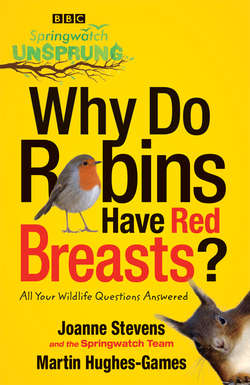Читать книгу Springwatch Unsprung: Why Do Robins Have Red Breasts? - Jo Stevens - Страница 11
Oyster Beds
ОглавлениеHow do shoreline creatures ever sleep? And do oysters and other such shellfish dream? Tedbun
This is a deceptively simple question that’s actually fiendishly difficult to answer. That’s because sleep is something of a biological enigma and biologists grapple even to agree on a definition of what constitutes sleep or why it’s necessary. If you think about it, it makes no sense for an animal to stop paying attention to the world around it when there are so many potential dangers. So there must be a really good biological reason for it beyond simply resting – we just haven’t worked out what that is yet!
All animals go through periods of activity and inactivity, even those that live on a shoreline and are bashed about by waves. Physiologically, sleeping animals usually have certain brainwave patterns, appear unconscious and have relaxed muscles (except some birds and marine mammals that would fall out of the sky or drown if they relaxed – see the later question about swifts sleeping on the wing). It’s fairly easy to recognise when mammals and birds are asleep, but what about animals such as oysters and shellfish? Many researchers have relied on assessing the brain activity of animals to determine if they are asleep or not, but what happens if an animal has only a simple nervous system and no brain? How can you tell if an invertebrate, such as a fruit fly, is asleep or just stationary? Well, biologists have devised experiments to investigate exactly that. We’re all familiar with the fuggy-headedness that comes with a lack of sleep – our cognitive abilities such as learning become impaired, and the same is true for other animals. When deprived of sleep, fruit flies take longer to learn and become more forgetful. And, just like us, some invertebrates that are denied sleep will try to catch up by sleeping longer at the next opportunity. Studies on honeybees, cockroaches, cuttlefish and crayfish suggest that they all experience a kind of sleep, and some biologists suspect that a sleep-like status is universal to all animals.
What about dreaming? In humans, dreams usually occur during one stage of sleep called REM (rapid eye movement) sleep, a state with particular brain activity that most mammals and some birds also experience. It’s difficult to prove but some higher mammals do appear to dream – just ask any dog owner who has watched their sleeping hound twitch and whimper after some imaginary squirrel or bone! However, there’s no concrete proof of fish, reptiles or any invertebrates falling into REM sleep. So oysters and other shellfish may be lulled to sleep by the sound of the ocean but they probably don’t dream.
